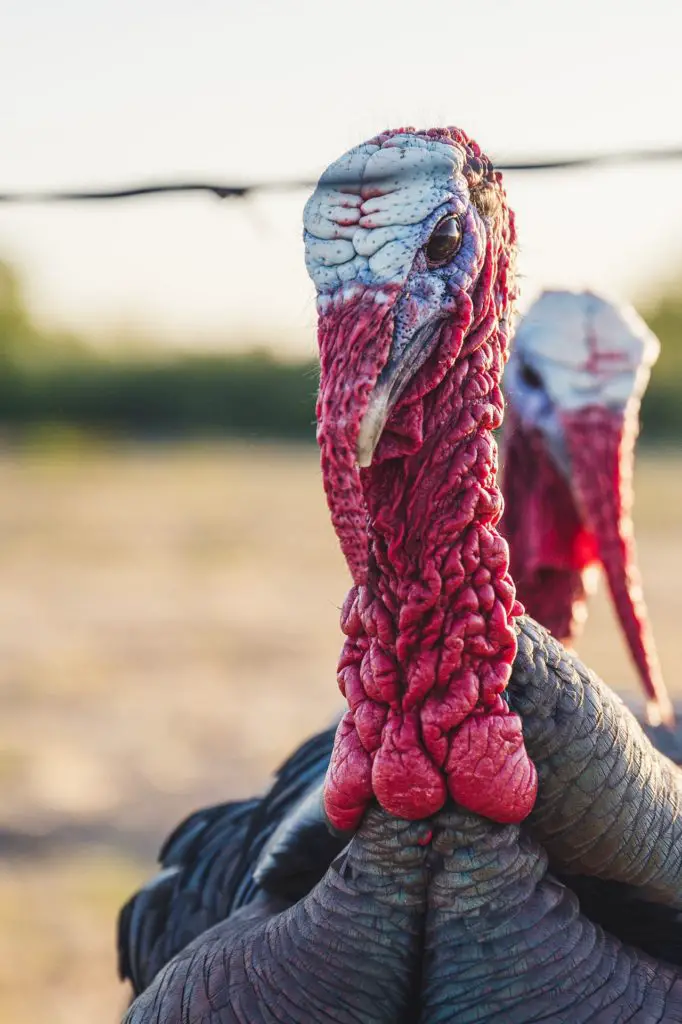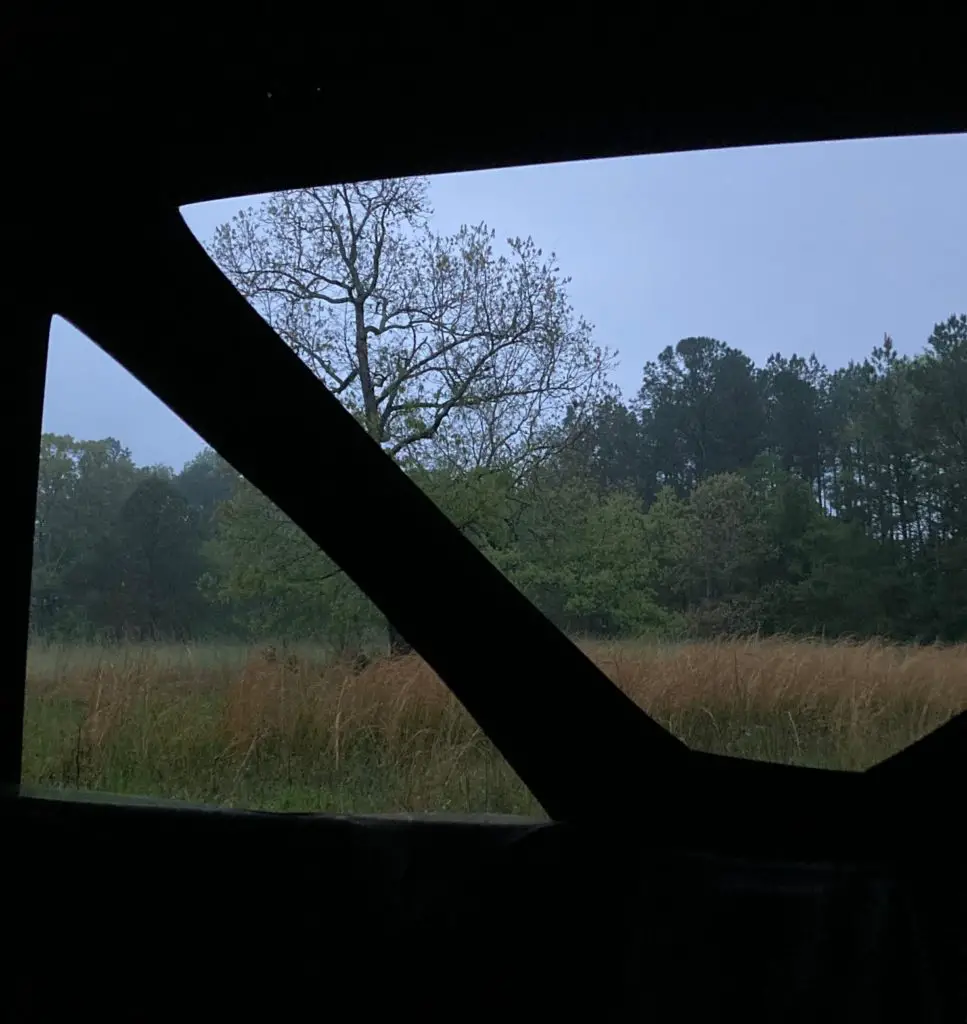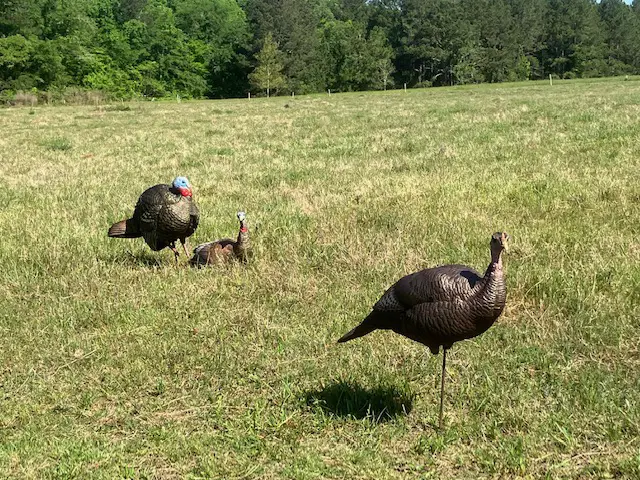
Turkey decoys can be one of the best tools in your turkey hunting box. However, if you don’t use them right, decoys can ruin your chances for success.
How many times have you heard something like this? “I had a tom start to come in, but he didn’t like my decoys and ran off.”
Or this? “I had a tom come into 70 yards, but I couldn’t get him to come any closer.”
What if I told you that we can eliminate, or at least mitigate, some of the issues that wild turkeys have with our plastic models? How do we do this? With a good turkey decoy setup.
So what is the best turkey decoy setup? That will depend on a number of factors including the time of the year, the area you’re hunting, and the style of hunting you do. Read on as I give you the details for how to create the ideal turkey decoy setup for your next spring hunt.
General Rules for a Turkey Decoy Setup
Regardless of when and where you are hunting, the following principles generally apply.
- Match the hatch. Just as a fly fisherman or a duck hunter tries to throw out what he is seeing in real life, so should you throw out decoys that mimic what your scouting has revealed. If you’re hunting a property with big flocks, fee free to throw out 5, 6, or 7 turkey decoys. If you’ve just seen some singles running around, keep your setup small.
- Set up jake or tom decoys so that they are facing you. Real toms will tend to want to go “face-to-face” with their newfound rival.
- Use the highest quality decoys you can afford. I have some suggestions below.
- Keep all decoys within 25 yards if you are gun-hunting. If you are bow hunting, keep decoys within 10-15 yards away.
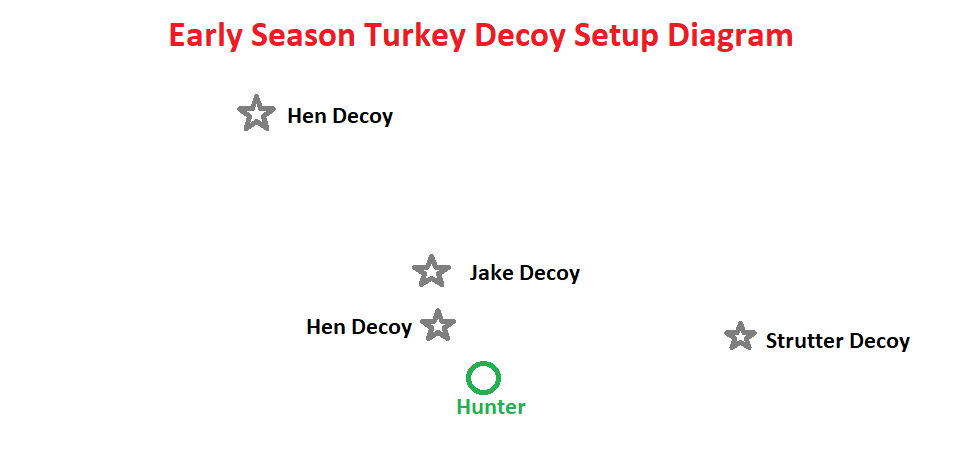
The Best Early Season Turkey Decoy Setup
During the early spring, tukeys may still be running in flocks in some states. This is when I like to use my biggest decoy setups.
I will typically use at least a jake decoy and two hen decoys. I may also throw in a strutter decoy to attract more attention to my spread.
I will set a jake decoy and a hen decoy closest to me (the shooter). I’ll have them 10-15 yards away if I am gun-hunting. A little closer if I am bowhunting. Favor that jake to your strong shooting side.
I want the jake facing me as the real gobblers will tend to want to head him up. You can use a breeding hen, an upright hen, or even a feeding hen. Stake her a little lower and position her just in front of the jake. You can even have the jake touching her.
Next, I will set up a solo hen spread out towards my strong-shooting side a little further out. This hen can be a feeding or upright hen. Really any posture will do except for a breeding posture (and heck, that may work too on some days).
Now going back to my weak shooting side, I will place the strutter. I want him away from the jake/hen combo and a good ways away from the solo hen. However, make sure he is still in gun range.
The idea with this setup is that you can appeal to the nature of almost any tom in the area. A real dominant tom will tend to come after either the jake or the strutter decoy. A more passive tom will hope that he can sneak into that lone hen and get a little action while keeping his space from the jake and strutter decoys.
If you’re confused, take a closer look at the turkey decoy setup diagram above. Hopefully, that will give you a better idea of what I’m trying to explain.
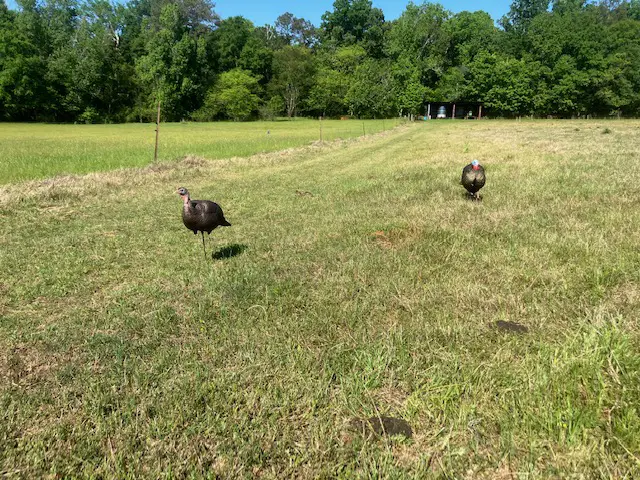
The Best Mid-Season Turkey Decoy Setup
Depending on where you are and how your hunting season lands, there can be quite a variety of mid-season strategies. Some situations may favor early season-type techniques. Others may favor a later-season approach. Observe the turkeys in your area and try different setups to see what works for you.
My typical mid-season setup is a simple jake and hen setup. I like a breeding or upright hen decoy for this. I will keep the jake and hen about 5 yards away from each other. It’s a less aggressive approach than my early season setup, but it can still get a feisty gobbler riled up.
The Best Late-Season Turkey Decoy Setup
In the late season, I will “tone down” my decoy setup just a bit. Toms are tired of fighting and getting beat up on it. Hens are nesting. Set up decoys to match that tone.
I don’t ever use a strutter during the late season. Naturally, you will hear from your cousin Bubba who has a friend who uses a strutter year-round and always limits out. Well good for that guy. My go-to is a single hen or even a pair of hens. If I do use a Jake decoy, I will put him as far away from the hens as possible while keeping all my decoys in gun range.
More than ever, during the late season I try to match what I am seeing on trail cameras or fields. If they are grouped, I group the decoys. If they are in pairs or singles, then that’s how I lay them down.
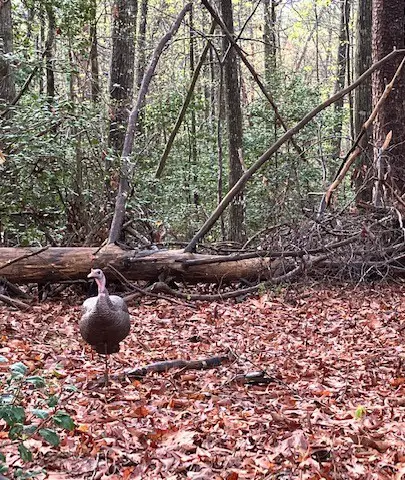
Run and Gun Turkey Decoy Setup
The previous turkey decoy setup suggestions favor the hunter on a field edge. He may be in a blind. Regardless, he’s not picking up all those decoys and moving a half mile away every hour or two.
If you’re moving around a lot, you don’t want a ton of decoys weighing you down. You also don’t want to have to spend a lot of time and make a lot of noise setting them up and taking them down.
When hunting an area with a lot of room to move, I will usually carry just one decoy (if I carry one at all). Early and mid-season, I will make it a jake decoy. A gobbler will hear your hen calls and come in. When he sees the jake, he will assume the hen is nearby, but hopefully, head straight over to your decoy take on this other potential suitor.
During the late season, I may carry just a single hen decoy. I like to set this decoy up fairly close to me. If that tom decides to hang up and try to make my “hen” come to him, I hope that he is already in range by the time he hangs up. When possible, I try to make it so he can’t see me or my decoy before he is within shooting range.
Choosing Decoys for Your Setup
I always recommend buying the highest quality decoys that you can afford. If you’re in the market for some new decoys, check out these reviews for a good starting point.

